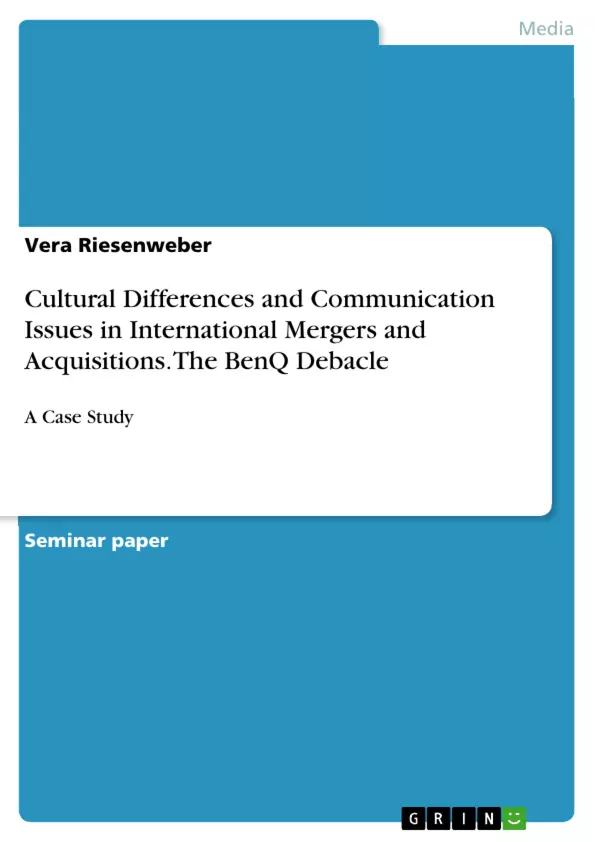The number of global corporations has grown in the last few decades. The advent of technology and fliberalization of political and regulatory barriers enables companies to operate their business internationally. There are less moving barriers between different countries, more common worldwide laws, less barriers in monetary transaction and fewer geographic distances. However, very often companies fail in acquisition, foreign direct investments and cross-border partnerships because their global strategies are not proper enough, or the execution is more complex as expected.
This paper deals with BenQ`s failure of acquiring of Siemens mobile devices. During the acquisition, parties face different challenges like market, technology and how to allocate budget, but in this case the biggest challenge was cultural interchange. This report analyzes cultural differences of both countries in which these companies are located based on Hofstede`s cultural dimensions. This particular acquisition is an appropriate example of why some intercultural mergers don’t work because of big differences in national, organizational and professional culture.
Inhaltsverzeichnis (Table of Contents)
- 1 Introduction
- 2 Merger and Acquisition
- 3 Dimensions of culture
- 4 Cultural incompatibility
- 5 Conclusion
Zielsetzung und Themenschwerpunkte (Objectives and Key Themes)
This paper analyzes the failed acquisition of Siemens Mobile Devices by BenQ, focusing on the cultural differences between the two companies. The paper aims to demonstrate how cultural incompatibility can lead to the failure of international mergers and acquisitions.
- Cultural differences and communication issues in international mergers and acquisitions
- The role of Hofstede's cultural dimensions in understanding cross-cultural communication
- The impact of national, organizational, and professional culture on business integration
- The importance of cultural intelligence in managing cross-cultural mergers
- The case study of the BenQ-Siemens merger as an example of cultural incompatibility
Zusammenfassung der Kapitel (Chapter Summaries)
- Chapter 1: Introduction This chapter introduces the topic of international mergers and acquisitions and highlights the increasing importance of global corporations in today's world. It also introduces the case study of the BenQ-Siemens merger and its significance in understanding cultural differences.
- Chapter 2: Merger and Acquisition This chapter provides background information on BenQ and Siemens, outlining their respective histories, business operations, and cultural values. It also details the process of the merger, including the motivations, goals, and challenges faced by both companies.
- Chapter 3: Dimensions of culture This chapter explores the concept of culture and its significance in international business. It introduces Hofstede's cultural dimensions framework and its relevance to understanding cultural differences between countries.
Schlüsselwörter (Keywords)
The main keywords and focus topics of this paper include cultural differences, communication issues, international mergers and acquisitions, Hofstede's cultural dimensions, cultural incompatibility, BenQ, Siemens, and the BenQ-Siemens merger.
- Quote paper
- Vera Riesenweber (Author), 2014, Cultural Differences and Communication Issues in International Mergers and Acquisitions. The BenQ Debacle, Munich, GRIN Verlag, https://www.grin.com/document/295540



